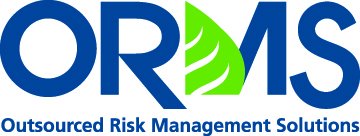New SBA SOP Offers Lenders Greater Leeway
Outsourcing Risk Management in a Time of Uncertainty
March 31, 2024Do You Know Enough to Be Dangerous?
May 10, 2024New SBA SOP Offers Lenders Greater Leeway
“The more things change, the more they stay the same.”
Thus wrote French writer Jean-Baptiste Alphonse Karr in 1849, and at least when it comes to the Small Business Administration’s latest Standard Operating Procedure for Lender and Development Company Loan Programs, he was right.
Last fall, the SBA released its latest guidance, SOP 50 10 7.1, replacing the previous version that just went into effect as of August 1. This latest version of the Administration’s Standard Operating Procedures includes mostly cosmetic tweaks designed to improve readability and consistency. These updates are designed to conform with changes in SBA regulations and Loan Program Requirements, including revisions to small business size standards, primary applicant eligibility requirements, and uses of proceeds from 504 loans.
However, SOP 50 10 7.1 also contains a handful of important new environmental due diligence provisions that all SBA lenders should be aware of, including:
- Environmental Policies and Procedures: Under the new guidance, environmental policies will apply only to real estate acquired, refinanced, or improved by the loan proceeds. This means that the SBA’s environmental guidance is no longer applicable to real estate collateral “available from, for example, a lien filed for a loan where proceeds are not used to acquire, refinance, or improve the real estate.”
- Lead Testing for Child-Occupied Facilities: For each new loan for Child-Occupied Facilities, the SOP requires lenders to conduct a new lead risk assessment and new testing for lead in drinking water at all indoor and outdoor taps and fountains accessible to children. Under the latest guidance, the assessment and any tests must have been conducted within one year of submission of the reports to SBA.
- Hazard Insurance Requirements: For SBA loans of $500,000 or less, the SBA requires hazard insurance on real estate acquired, refinanced, or improved with the proceeds of the SBA loan. Requirements for SBA loans of greater than $500,000 have not changed.
- Contamination Determination: In Section A., Chapter 5 (“Other Core Requirements” – “Mitigating Factors”) (E.5.d.vii) of the SOP, the condition of “groundwater” was removed from the factor of “groundwater contamination originating from another site.” Now, the SBA will consider any contamination from an offsite source in determining whether disbursement will be made before remediation or monitoring is completed.
- Flood Insurance Requirements: Flood insurance under the National Flood Insurance Program (NFIP) or comparable private flood insurance that meets the requirements on page 77 of SOP 50 10 7 is now required “if any building (including mobile homes), machinery, or equipment acquired, installed, improved, constructed, or renovated with the proceeds of SBA financial assistance is located in a special flood hazard area. The requirement applies also to any inventory (business loan program), fixtures, or furnishings contained or to be contained in the building.” For SBA loans on condominium and cooperative units, the SBA now only requires lenders to confirm that the individual unit owner has obtained an adequate flood policy, if required. Bottom line, the SBA no longer requires flood insurance on real property or personal property located in a building not being acquired, improved, constructed, or renovated with the SBA loan proceeds. Lenders no longer have to provide written justification for forgoing the flood insurance requirement, as specified under the previous SOP.
In addition, the new SOP includes several updates that impact real estate collateral analysis and appraisal requirements, including:
- For 7(a) loans of $50,000 or less, except for International Trade Loans (ITLs), lenders are no longer required to take collateral.
- For 7(a) Small loans and Express loans, SBA lenders “must use commercially reasonable and prudent practices to identify collateral, which conforms to procedures at least as thorough as those used for their similarly-sized non-SBA guaranteed commercial loans. For loans over $50,000, the Lender must follow the written collateral policies and procedures that it has established and implemented for its similarly-sized, non-SBA guaranteed commercial loans.”
- For 504 loans, Certified Development Companies (CDCs) must disclose any deed restrictions on the project property in the collateral analysis section of the CDC’s credit memorandum.
- For 504 loans, if the appraisal comes in at less than 90% of the estimated value, the debenture must be reduced or, if available, the CDC must secure additional collateral or additional investment that will be added to the required borrower’s contribution and will be sufficient to address the gap in value.
Broadly, the changes incorporated in SOP 50 10 7.1 represent relatively minor updates that bring greater consistency, simplicity, and readability to the SBA’s guidance. The environmental and collateral valuation revisions allow SBA lenders greater independence and leeway to apply their own internal commercial lending policies to SBA 7(a) and 504 loans, as well.
SBA lenders must follow SOP 50 10 7.1 for all 7(a) and 504 applications submitted to the SBA on or after November 15, 2023.
The fact that the latest version of the SOP includes few substantial changes to its environmental due diligence and collateral valuation sections reinforces the fact that the SBA has worked hard to improve and streamline its guidance over time. For all lenders, the SOP now serves as a template for prudent environmental due diligence for all commercial loans—even non-SBA deals.
Whether or not you are active in SBA lending, we recommend reading through the entire 420-page SOP for further details. As always, if you have any questions, don’t hesitate to reach out to your risk management experts at ORMS for assistance. We are here to help!
